Stockholm: Friday
This is the second post in a multi-part series about our trip to Stockholm in fall 2023. All entries here.
We wake up early and grab a quick breakfast at the hotel before heading out. We've forgotten to pack Sam's prescription, and it's one of those medicines that ruins your vacation if you suddenly stop taking it. We hike down to the nearest pharmacy and pleadingly bust out our hellos and gormless tourist English. The pharmacist answers us in the kind of clear, measured accent that's usually reserved for spas. I, for one, am cowed. We're informed that we need to visit the walk-in centre at the hospital nearby to get a new prescription written.
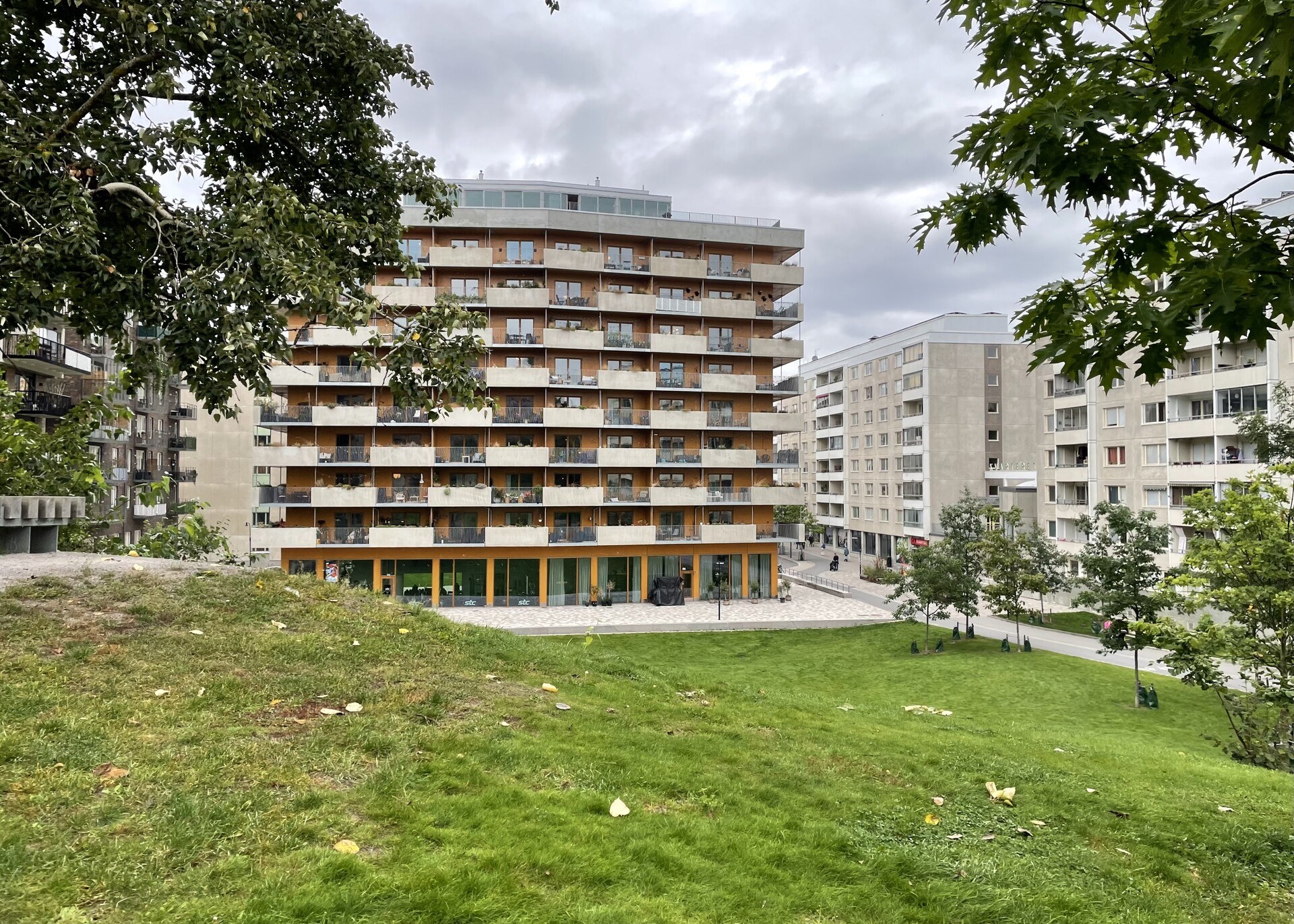
At the hospital, we're arrested by a little electronic kiosk with no 🇬🇧English button. Next to the kiosk is a big glass door with a waiting room on the other side. The door appears to be locked. We press what we hope is the Main Button on each screen, and, eventually, the kiosk prints a ticket with a number and the door clicks and swings silently open, admitting us to the waiting room. We sit down and wait for the number on our ticket to be called.
This hospital, it turns out, cannot help us—but can direct us to a different clinic that can. We hightail it down there, briefly boarding a train going in the wrong direction but taking notice before we wind up stranded in the great Scandinavian suburbs. There is an electronic kiosk just inside the door to the clinic as well, which we jab at until it spits out a ticket. There are a discouraging number of people waiting in immaculately-designed chairs about the room. We settle in for a long wait, but our number is called after nearly no time at all by a doctor who looks suspiciously like an architect cosplaying as a doctor. He speaks in curt, extremely direct sentences like, "What medicine is it?" and "This medicine is necessary." It's comforting. We come away with the prescription that Sam needs, a little white prescription identification tag in a laminated sleeve.
We're old hands with kiosks by the time we get to the pharmacy. Swedes, it turns out, are queue-avoidant. In any situation in which waiting is even tangentially necessary, a kiosk that dispenses numbers can be found nearby. We punch in and retire to a little waiting area lined with fake plants, wedged between sunscreens and foot plasters. Our number is called and a pharmacist with the most neutral English accent I have ever heard dispenses the prescription. It occurs to me that everyone in this country speaks English better than we do.
We stop at a 7-Eleven next door to the pharmacy for a bottle of something called Trocadero, a jauntily-labeled drink tasting ambiguously fruity (officially, apple and orange), and which, importantly, contains caffeine. I perk up nearly instantly. It has been about 2 hours since we left the hotel. The Swedish healthcare system, we discover, is extremely efficient.
Our next destination is Skansen, an open-air historical museum (the world's oldest!) on Djurgården, an island district of Stockholm given over to all sorts of museums, along with the triply-qualified Royal National City Park. While there's a tram that runs to Djurgården, we decided instead to take advantage of Stockholm's excellent cycling infrastructure by renting a couple of bikesharing bikes and riding over there ourselves.
Reader, I cannot tell you what a plain joy it is to schlepp around Stockholm on a single-speed electric bicycle. The bike lanes are expansive, physically separated from the road, and well-respected by pedestrians and drivers alike. There are bike turning lanes. There are bike traffic signals, and sitting at one with a handful of other cyclists is nearly a thrill. O let me sit in this traffic a while longer, O let me but a moment longer ride in the slipstream of the cycle ahead. Riding in a queue of other cyclists on their homeward commute feels radically unlike sitting in traffic. It feels great. And an electric bicycle makes this dream doubly sweet: it really does feel like a great invisible hand pushing you along, like a tailwind that shifts to remain always at your back. I don't doubt that one of my first purchases, were I to move to Stockholm, would be a sturdy, unpretentious bicycle.
We arrive at Skansen refreshed and unsweaty. There's ample bike parking—amid hordes of electric scooters—across the street from the museum. A nominal fee grants entrance to the winding byways of the park. Skansen was opened at the end of the 1800s to try and open Stockholmers' eyes about life in the country, and besides being an ethnographic map of Sweden throughout the ages, it's almost a historical destination in and of itself. There's a reconstructed village near the entrance to the park, but I think that the highlights are the various homesteads lifted wholesale and nestled amid farm animals and fences deeper in the park.
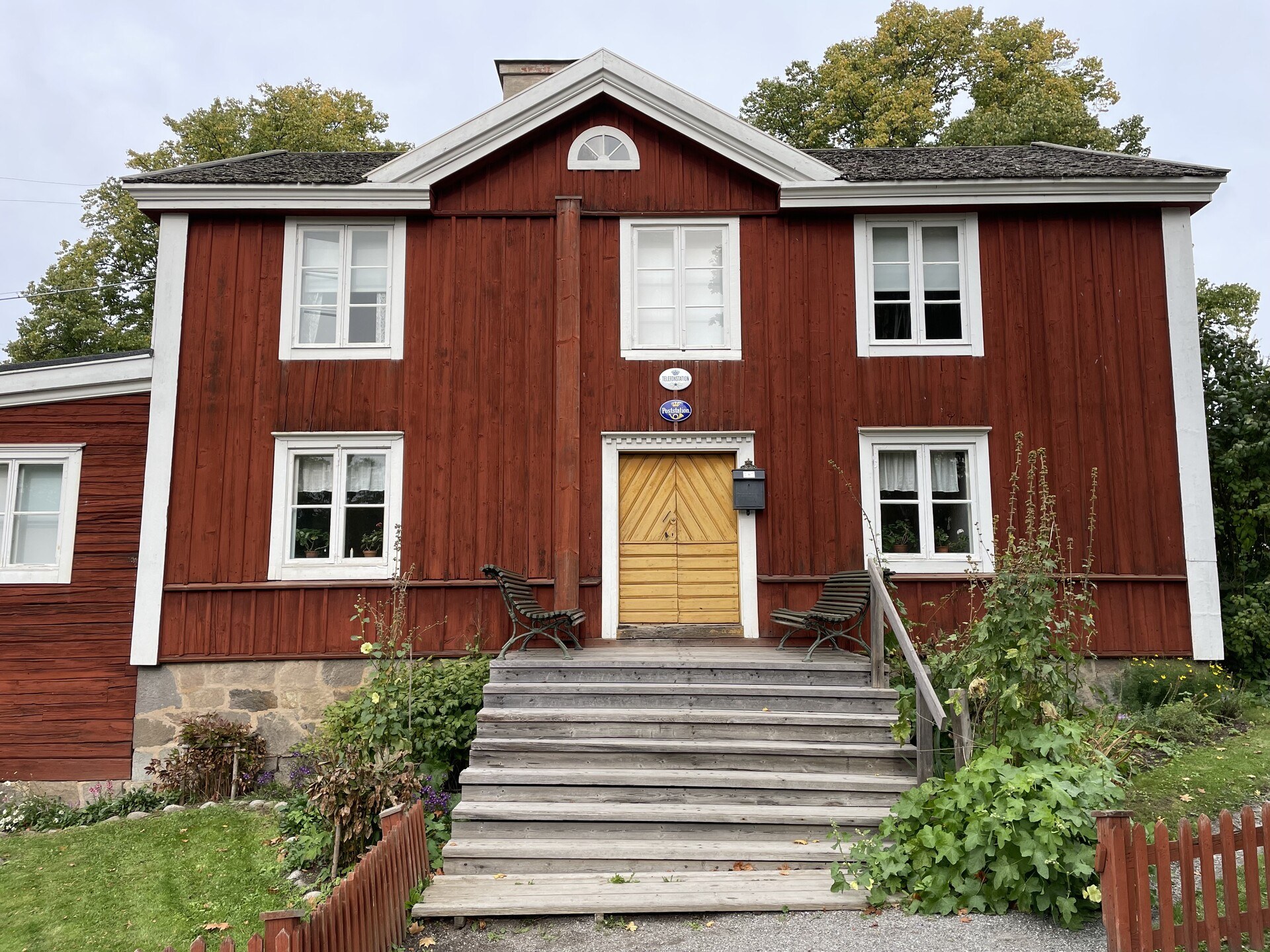
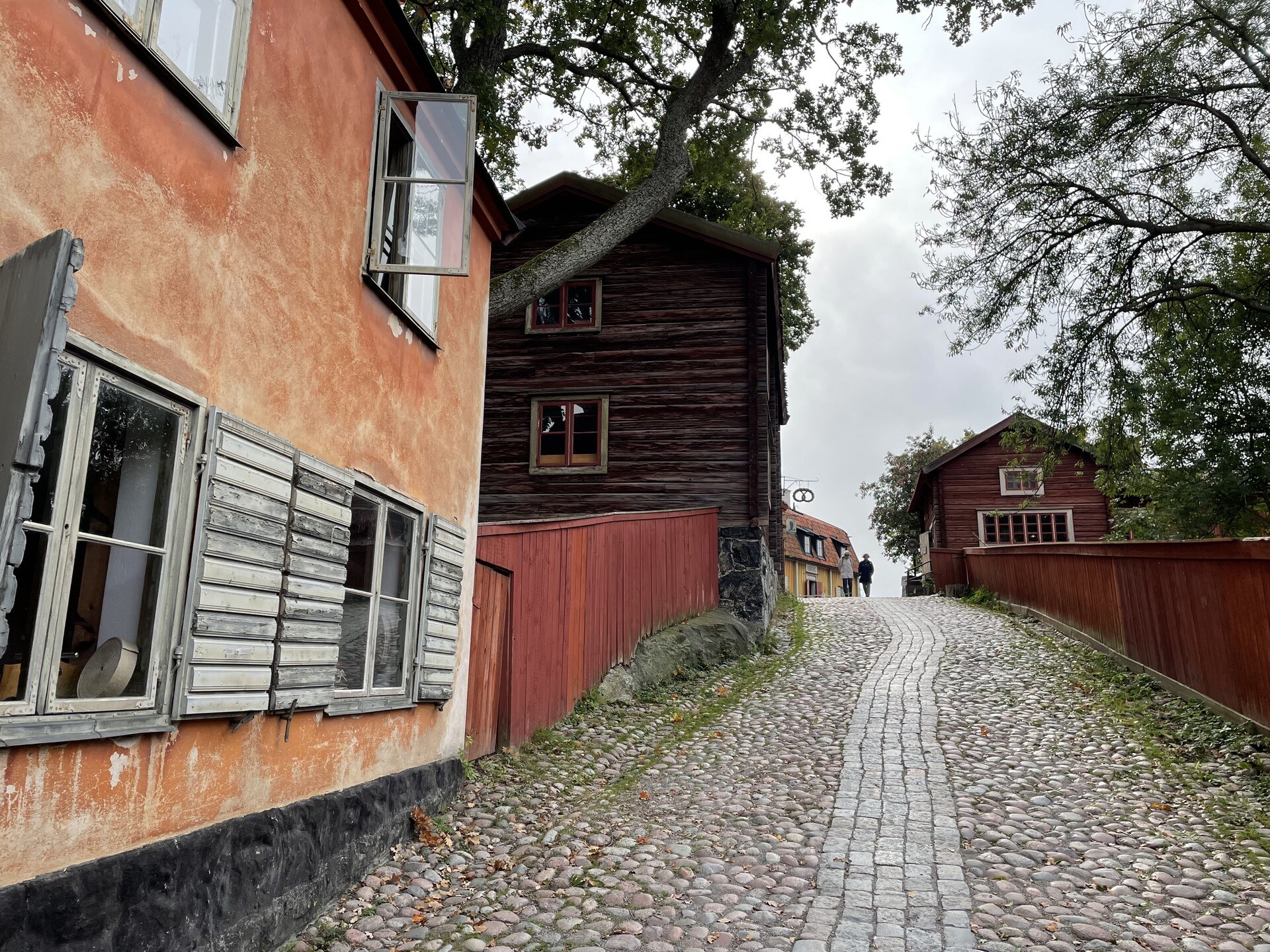
Many of the buildings in the reconstructed village are shut, it being a quiet Friday afternoon, but we make polite smalltalk with a pair of park employees cast as bakers. They show us all of the different kinds of bread available in Sweden, and we're awed. None of these breads, to our disappointment, are real: they're all props.
Just up the street, however, the unmistakable smell of real bakery. We follow our noses and find ourselves in a timber-built shop selling craft sodas and—yes—Sweden's famous kanelbullar. These are to American cinnamon rolls what Alexander Skarsgård is to American men. I know before my first bite that I will be shortly an ardent fan. I am transported. There is no point in trying to describe it here.
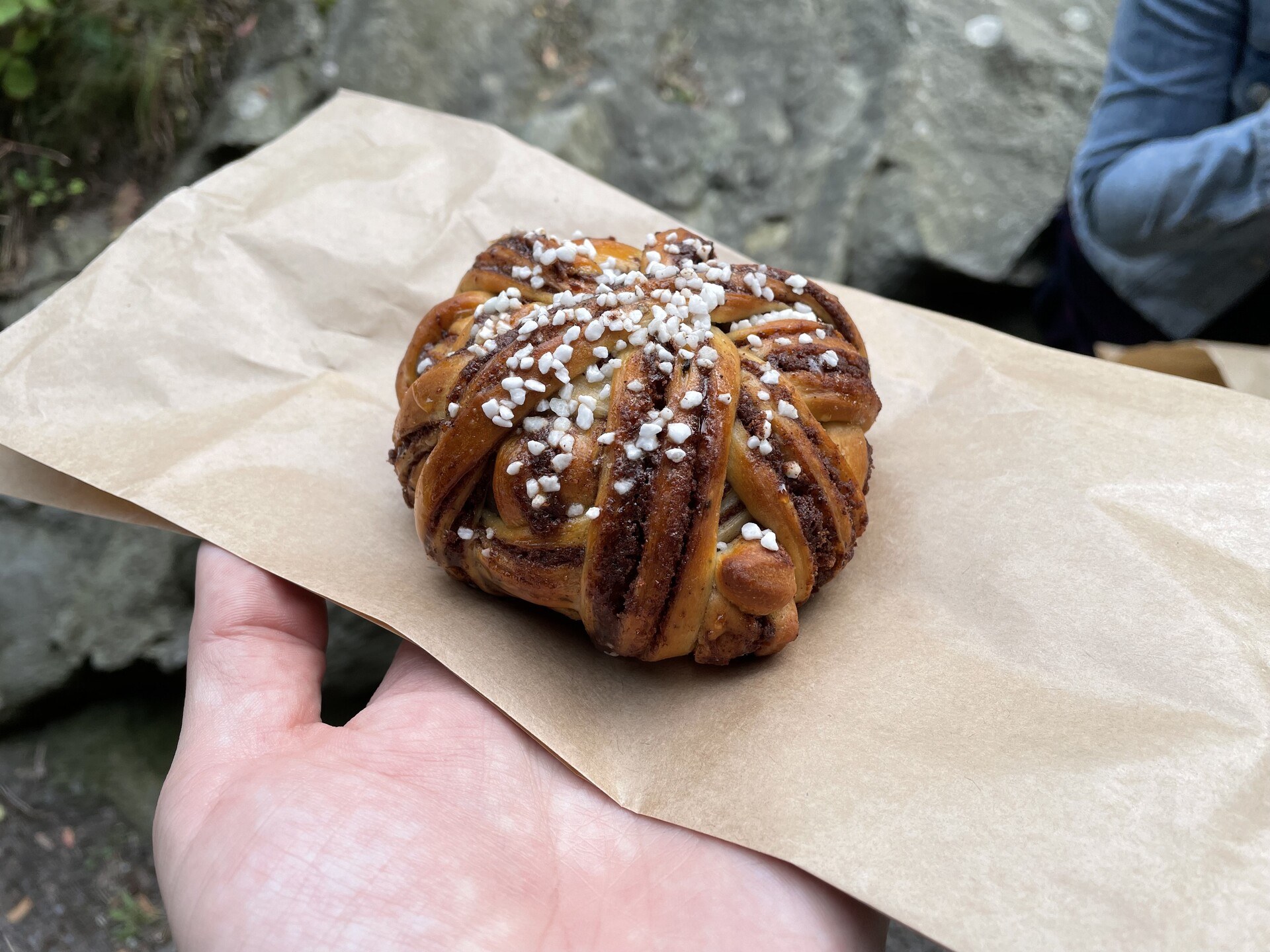
Skansen itself encourages wandering. There's no marked route, so much of our time is spent pausing, looking around, and heading in the direction of whichever building looks least familiar. There's plenty of place to sit a while and enjoy the quiet—and it's surprisingly quiet, for a park only a little removed from the city centre. Most of the buildings are wooden and remarkably old. We stop and chat with the staff in their period-correct get-ups. Some of the buildings are young enough that their original inhabitants are still around. Not still living in the buildings, I mean. They mostly live in minimalist low-rises on the waterfront in Stockholm Harbour.
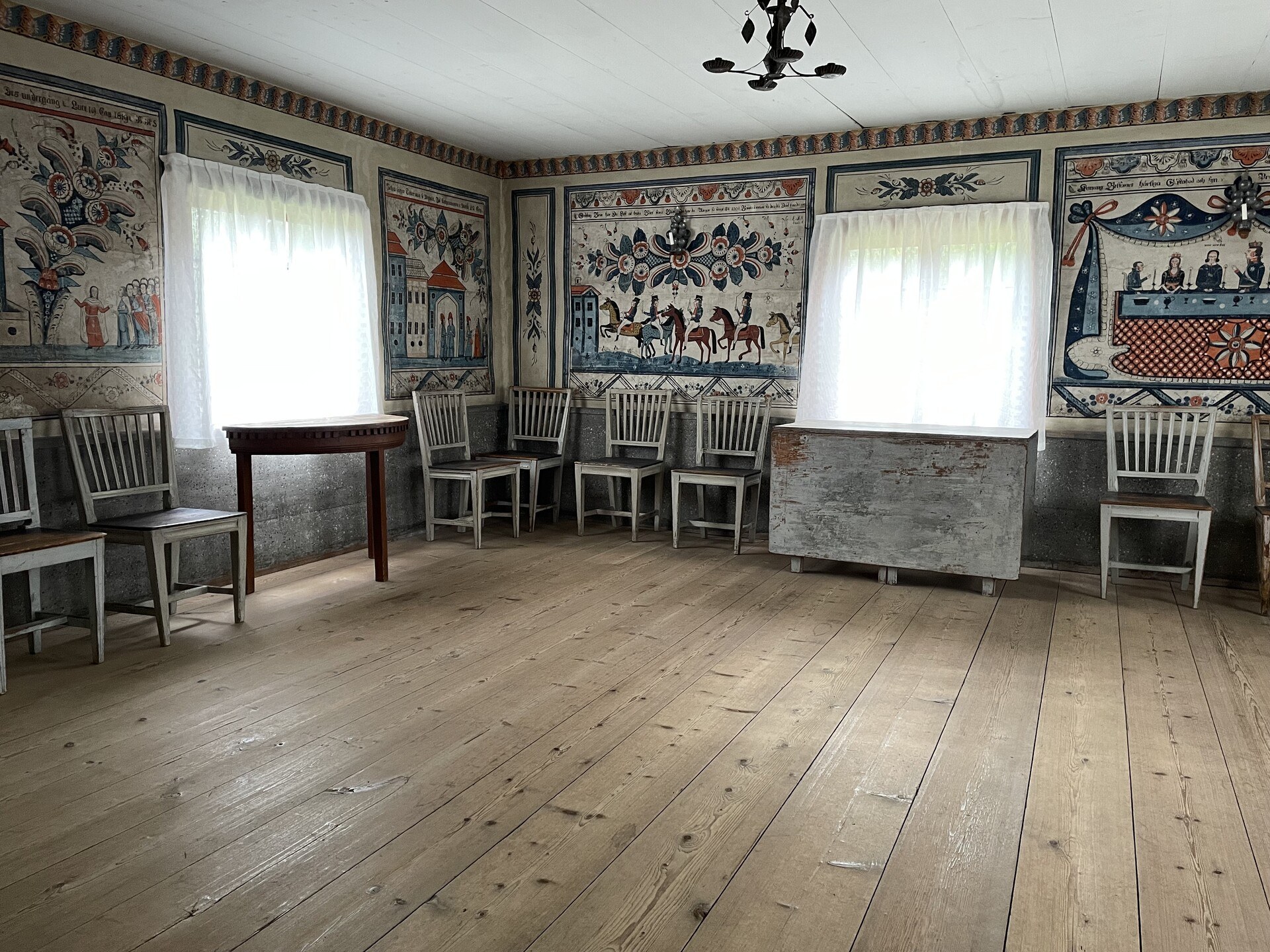
At the edges of the park are a series of spacious pens housing local animals: sheep, pigs, a few moose, a couple bears. I resist the urge to run back down to the bakery for another kanelbulle.

By and by we see what we came to see, and we head out the gates and back to the bikes. Electric scooters seem to be much more popular among the app-rental crowd, and the bikes we rode down to Skansen are still where we left them. We ride up to Gamla Stan for a coffee and another kanelbulle at Under Kastanjen, a stylish cafe away from the touristy areas. Pausing midafternoon for a coffee and a pastry is, in Sweden, called fika, and the Swedish tourism industry makes a mint selling tourists on the concept. I'm not sure by what mechanism a regular coffee break is metamorphosed into a fika, but I'm not in the business of second-guessing opportunities to stuff my face with kanelbullar.
We head back to the hotel (by bike, natch) and Sam takes a nap, while I decide to head back out for a run. This is the first proper vacation that I've brought running shoes for, and I'm excited to get out amongst the town and see what there is to see. I make my way up off of the island of Södermalm, where our hotel is, dodging Friday afternoon rush hour as I go. From there, I skirt the the Skeppsbron quayside past Gamla Stan, the old town, where hordes of foot-weary tourists are making their way back to their coaches. A brief jaunt into town and through the Kungssträdgården before a loop of Skeppsholmen and Kastellholmen, two of the smaller islands in Stockholm harbour. Then back the way I came, still dodging commuters all the way. I feel distinctly like a local.
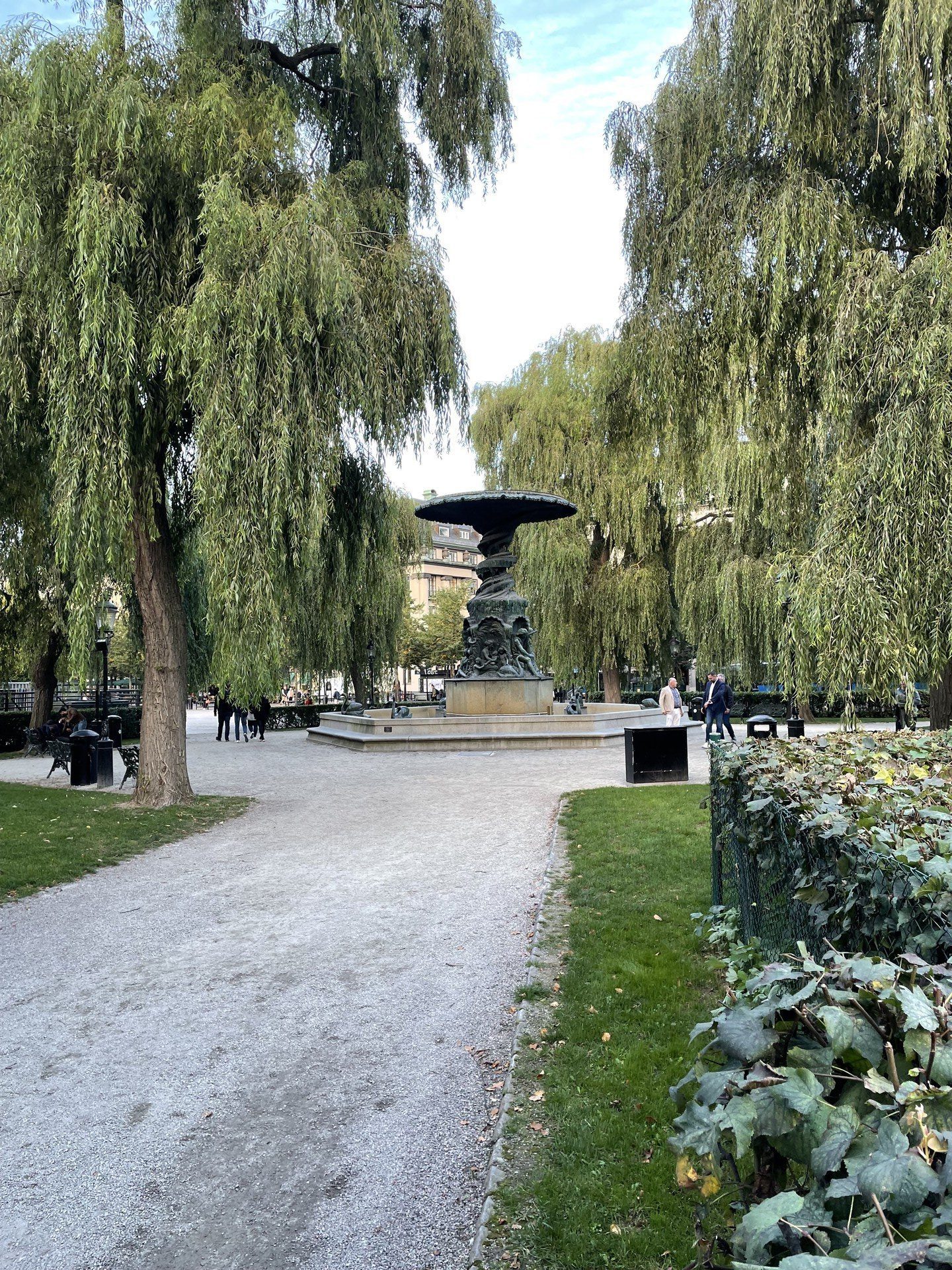
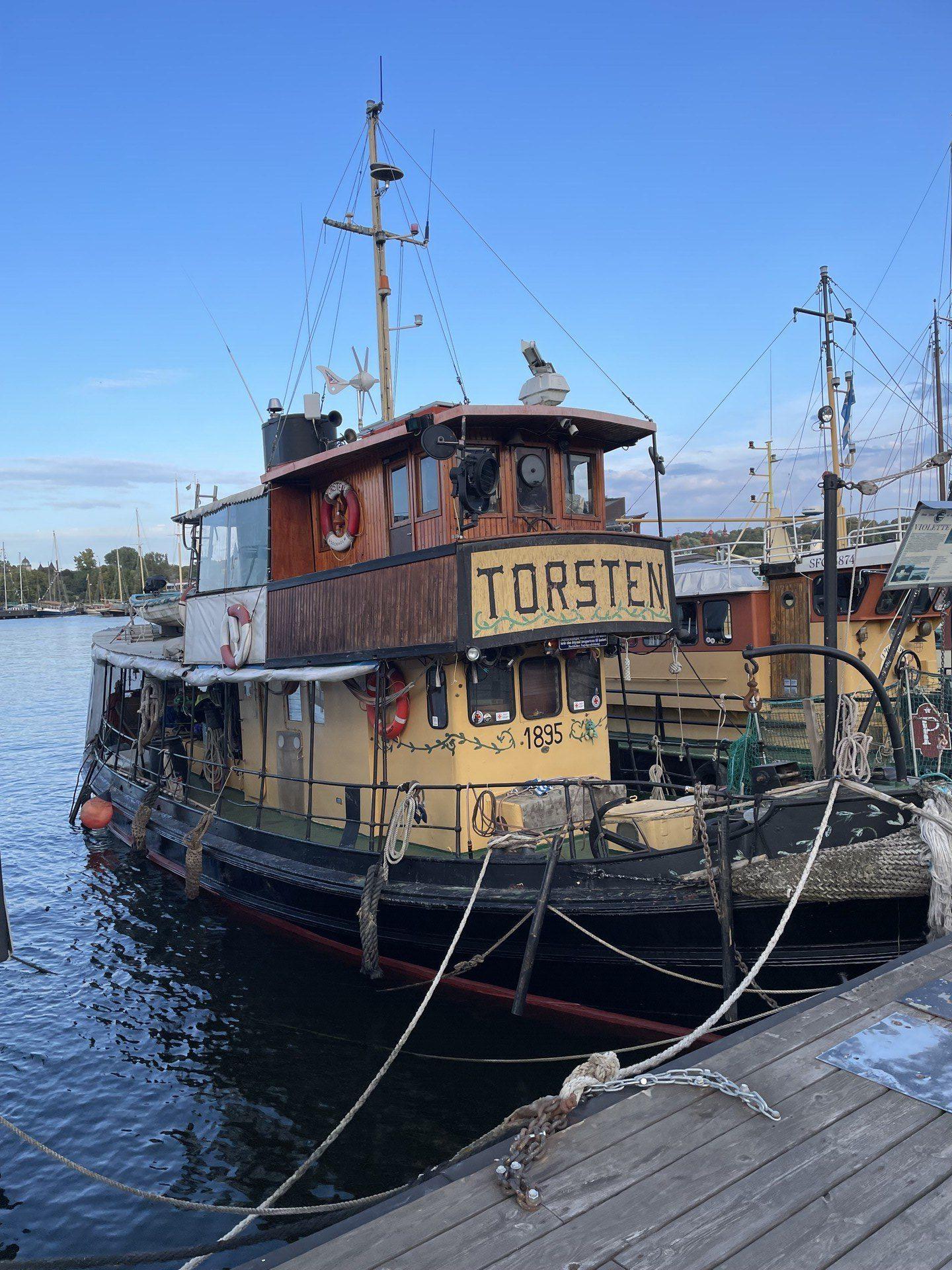
Sam's up when I get back, so I shower and we get ready to head out to dinner at Movitz back in the old town. Things have quieted down by the time we get there (by bike, of course) and the tourist shops have all closed up. We have a beer in the bar and descend to the cellar for dinner. Sam gets the meatballs and I get reindeer. I like to eat reindeer very much, it turns out.
Gamla Stan is mostly deserted by the time we finish dinner. We visit Mårten Trotzigs gränd, an alley so narrow that it has its own Wikipedia page. There's a family perched halfway up the alley's thirty-seven steps. The mother seems nonplussed by the alley, wielding a selfie stick like an epée and trying unsuccessfully to hustle her husband and son into enthusiasm. I expect this alley to be truly, nearly unbelievably narrow, but it turns out to mostly just be a very well-lit, clean alley. I have slept in narrower alleys in Monbetsu. I am not impressed.
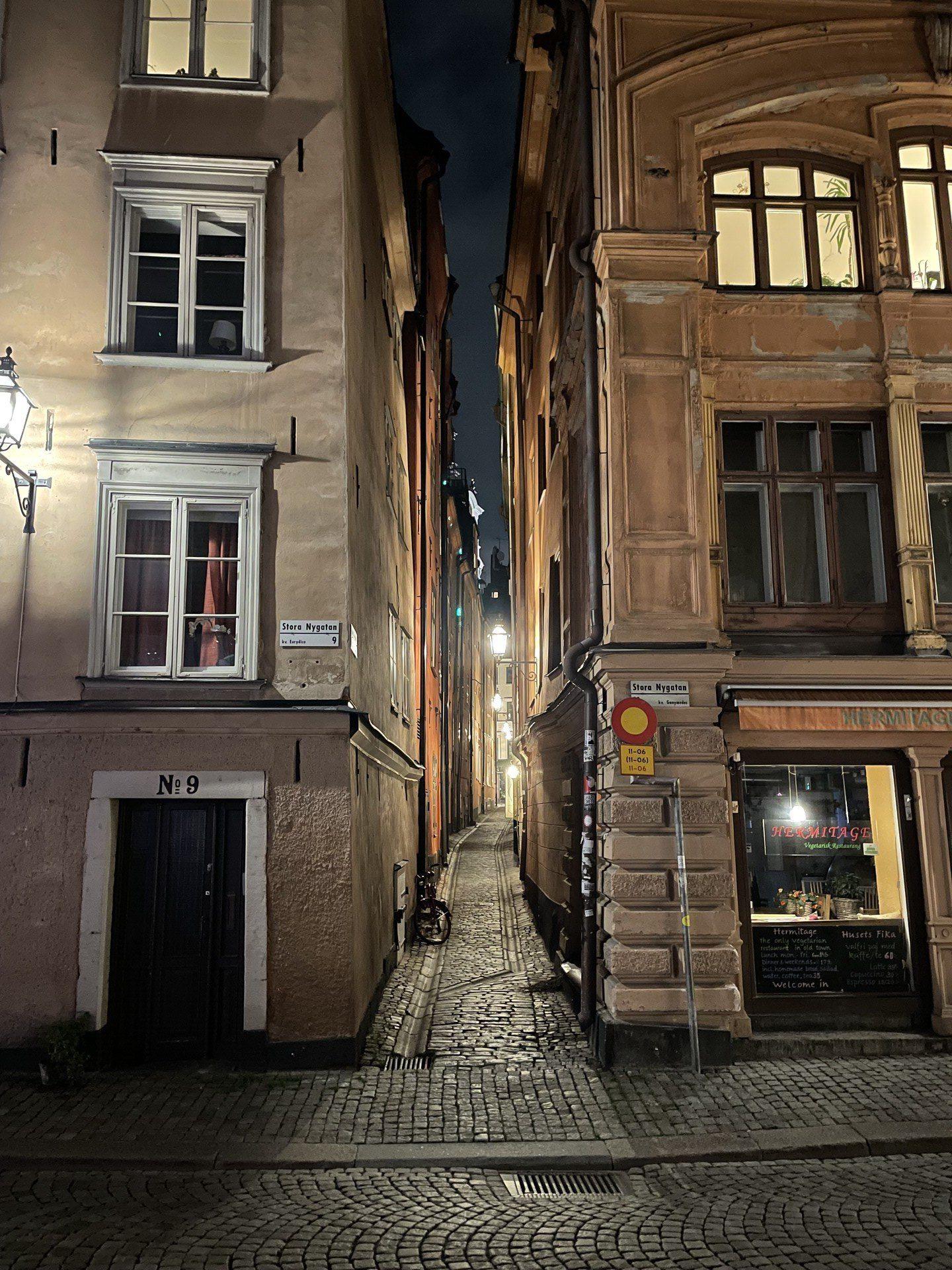
We cycle back to the hotel and watch the end of Rush Hour.
Next
Visiting Birka, drinking a flight of IPAs at a Whippet Bar, attending a post-metal concert, eating grillade korvar.
Previous
Arriving in Stockholm at an average speed of two hundred kph or thereabouts.